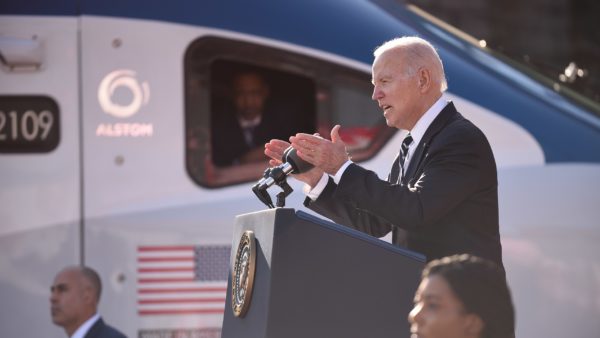A flagship project of President Joe Biden’s $1.3 trillion bipartisan Infrastructure Investment and Jobs Act (IIJA) is accelerating this summer, a senior project leader tells GCR.
Amtrak’s $6bn programme to replace the Civil War-era Baltimore & Potomac Tunnel (B&P Tunnel) in Baltimore, Maryland is gathering pace this summer.
For many years it has been a bottleneck on the Northeast Corridor, the busiest stretch of rail in the US.
With $4.7bn in federal grants under the IIJA, $800m from Amtrak’s own funds, and $450m from the State of Maryland, Amtrak will replace the B&P Tunnel, completed in 1873, with two new, single-track tunnels on a different alignment.
The new tunnels will be named after Frederick Douglass, an African-American slave and Maryland native who escaped to freedom by boarding a train in Baltimore in 1838, and went on to become a leading abolitionist and social reformer.
The 1.4-mile, S-curving B&P Tunnel is safe, Amtrak says, but age-related issues like excessive water infiltration and a sinking floor have required expensive, ongoing maintenance.
More than a hundred trains use the tunnel every day, but its sharp curves mean they must slow down to 30mph.
The new 2-mile-long tunnels will have a shallower curve into Baltimore Penn Station, allowing more trains to pass through faster.
While the tunnel replacement is the centrepiece of Amtrak’s so-called Frederick Douglass Tunnel Programme, it also includes comprehensive modernisation of a 10-mile stretch of the Northeast Corridor in the Baltimore area.
Contractors will replace five road and rail bridges; build new rail infrastructure (interlockings, tracks, catenary, etc.); and build a new West Baltimore Station for the Maryland Area Rail Commuter (MARC) service.
Kicked off by Joe Biden himself (pictured) in January last year, the Frederick Douglass Tunnel Programme is Amtrak’s biggest infrastructure upgrade in its 51-year history.
It’s scheduled to complete in 2035.
Assembling the team
“The project is very well underway,” said Luigi Rosa, PMP, civil engineer and Assistant Vice President of the Frederick Douglass Tunnel Programme, in an interview with GCR.
“We started demolition last January, we’re going to start construction really now, this summer, and tunnel excavation is slated to start at the end of 2026.”
Amtrak awarded the contract to build the new tunnels to a joint venture of Kiewit and JF Shea in February this year.
In April, it appointed the “Advance” joint venture of Jacobs and Aecom to the role of delivery partner.
Serving the Megalopolis
Rosa said the project was of national significance.
“You need to consider that the busiest railroad in North America is the Amtrak Northeast Corridor between Washington, DC, Baltimore, Philadelphia, New York, and Boston ,” he said.
“It’s part of the northeast mega region, also called the ‘Megalopolis’; 20% of the American population lives along the Northeast Corridor, and it’s the third [largest] economy in the world, with $5 trillion in GDP.
“So it’s a very important part of America, and if you think that we rely on a tunnel in Baltimore … that was opened 151 years ago, it’s pretty amazing.”
Amtrak has said it wants to double its train services between New York and Washington in the next 15 years.
“We have great support from the White House, from Congress, from our governor Wes Moore, and the City of Baltimore Mayor Brandon Scott,” Rosa said, adding that community engagement was a high priority now as construction begins.
Subscribe here to get stories about construction around the world in your inbox three times a week
The post Amtrak’s biggest-ever upgrade is set to unblock America’s busiest railroad appeared first on Global Construction Review.


